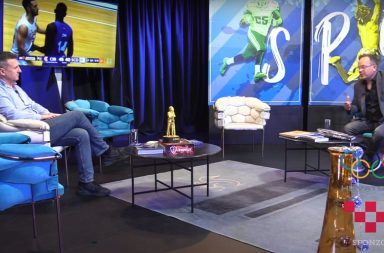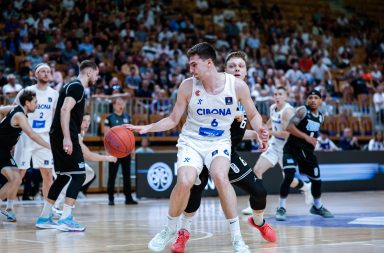Ask any NBA fan and they?ll tell you. They?ll remember the precise moment when they heard the tragic news. When the story broke on a hazy June 7 summer day in 1993 that Drazen Petrovic had died at the age of 28 in an automobile accident on the Autobahn in Germany, it was a moment that left you sad, speechless, and asking countless whys.
The legacy Petrovic left behind was immense. Not only was he was one of the game?s greatest and most accomplished players but he was also one of the NBA?s premier shooters, even in just four seasons and 290 NBA games. Yet his mark in the NBA was also that of a pioneer. While other international players during the mid-?80s and ?90s such as Hakeem Olajuwon, Detlef Schrempf and Rik Smits all enjoyed varying degrees of success in the NBA, their respective games were all honed at U.S. colleges. Petrovic was the first international player to arrive directly from overseas to make a significant impact in the NBA, serving as inspiration for other players all over the world to follow.
Such greatness was not surprising to those who saw Petrovic play in his native country of Croatia where he once scored 114 points in a game on 40 of 60 shooting or starred in leading the Yugoslavian Olympic team to a silver medal in the 1988 Olympics.
\”Drazen was one of the greatest players ever,\” said Rasho Nesterovic, a native of Slovenia and a member of the San Antonio Spurs. \”Back home, 90 percent of kids tried to be like him. His hard work inspired a lot of kids.\”
Petrovic averaged 37.7 points in four seasons with Cibona Zagreb and was recognized as the Croatian Player of the Year four times, while also earning MVP honors in the 1989 European championships. He was selected by the Portland Trail Blazers in the third round of the 1986 NBA Draft (60th overall selection) and entered the NBA for the 1989-1990 season.
Joining the 1989 Western Conference champion Trail Blazers team that featured perennial All-Star guard Clyde Drexler, Petrovic had to adjust to a new role as he found himself averaging just 12.5 minutes and 7.6 points per game.
The growing pains and adjustments on and off the court in trying to succeed in a new country were shared by another high profile international player who was selected by the Los Angles Lakers with the 26th overall pick in the 1989 Draft.
\”We came to the NBA the same year and we talked on the phone almost every day, trying to encourage each other and trying to survive,\” said Vlade Divac. \”It was tough for him. He knew that he could play, but he didn?t have the chance to show what he could do.\”
Statistics aside, Petrovic?s dedication in practice earned the respect of his coaches and teammates. When the Blazers traded the 6-5 guard to the New Jersey Nets in January 1991, Drexler predicted big things for the Croatian native.
\”I?m telling you, this guy will make the East?s All-Star team within two years,\” said Drexler. \”I guarantee it. You?ve never seen a guy shoot like he can, or work as hard.\”
Drexler was right. Although Petrovic ultimately was overlooked for such honors, he embraced his fresh start with the Nets and was determined to show the fans in the United States what the supporters back home were missing. The manic approach to practice was turned up yet another notch and his goal of getting stronger resulted in 20 pounds of added muscle.
The hard work paid off. In Petrovic?s first full season with the Nets, he saw his scoring average jump to 20.6 points per game on .508 percent shooting while logging nearly 37 minutes per game. No longer would he have to take a backseat. Petrovic was fearless on the court, taking on all comers regardless if their last names were Jordan or Miller. Whether it was Croatian or English, intimidation was not in Petrovic?s vocabulary.
\”Drazen had to wait to be successful, but he made it,\” said Croatian native Dino Radja who played four seasons with the Boston Celtics in the mid-\’90s. \”He sat two years on the Portland bench, but then he came to New Jersey and he became a star.\”
The success only made Petrovic hungrier, laying the groundwork for his greatest NBA season ever when he averaged 22.3 points on .518 percent shooting, including .449 from the three-point line where he would routinely launch rainbow jumpers several feet beyond the 23-foot, 9-inch mark.
Petrovic had broken through. Although he should have made the All-Star team that season, the media didn?t overlook his accomplishments, voting him to the All-NBA Third Team. Just as his NBA career was taking off, tragedy struck. Less than two weeks after being recognized as one of the top 15 players in the NBA, Petrovic died.
\”We, all of us, were very, very sad at that time because we, the guys from the [Croatian] National Team, feel like family,\” said NBA veteran Toni Kukoc who was born in Split, Croatia and played alongside Petrovic in the ?88 and 1992 Olympics where they led Yugoslavia to a silver medal. \”We spend a lot of time during the summer, we always have our European Championship or Word Championship or Olympic Games. So we spend about three or four months, together every day. We feel like a family. So when you lose someone like Drazen, it was a very hard time.\”
Although his life and career ended prematurely, his impact and place in basketball history will continue to live on for generations to come. Not only officially in the Naismith Memorial Basketball Hall of Fame where he was enshrined in 2002 but in the hearts and minds of those fortunate enough to see him play.


